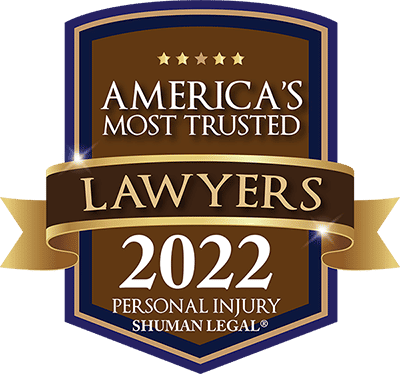Symptoms to Look for After a Fall on the Back
Last updated Monday, November 11th, 2024

Knowing what symptoms to look for after a fall on the back is essential. Immediate pain, difficulty moving, and neurological issues can indicate serious injury. This guide will help you identify these symptoms and decide when to seek medical attention.
Key Takeaways
- Immediate pain and discomfort, such as sharp or ongoing pain, signifies potential serious injuries and necessitates prompt medical attention.
- Mobility issues, including difficulty moving and severe restrictions in movement, can indicate mechanical strain or serious conditions like herniated discs, requiring medical evaluation.
- Neurological symptoms, such as numbness, confusion, and balance problems, may suggest significant injuries and demand urgent medical assessment to prevent complications.
Get Our Team, Working In Your Favor
Immediate Pain and Discomfort
One of the first indicators of back injuries after a fall is immediate pain and discomfort. This pain can range from minor to severe and can manifest in various forms, such as sharp, stabbing sensations or a dull, constant ache.
Recognizing these pain symptoms can indicate the severity of the injury and the need for prompt medical attention.
Sharp Pain
Experiencing sharp pain immediately after a fall is a red flag that should not be ignored. This type of pain often signifies serious injuries such as fractures or broken bones. If you feel sharp pain, seek medical attention immediately to prevent further injury and ensure proper treatment.
Sharp pain can also be an indicator of other severe injuries, including compression fractures or muscle strains. These injuries require a professional medical evaluation to determine the appropriate course of treatment. Neglecting sharp pain can result in complications and longer recovery periods.
Ongoing Pain
Ongoing pain after a fall can be just as concerning as sharp pain. Persistent discomfort may indicate serious conditions such as spinal cord injuries or soft tissue damage. If the pain continues or worsens, seek a professional medical evaluation to rule out serious injuries like fractures.
Ignoring ongoing pain can lead to chronic conditions and further complications. Monitor other symptoms accompanying the pain, such as numbness or weakness, which may suggest more severe underlying issues. A timely medical evaluation can help in addressing these concerns effectively.
Mobility Issues
A fall on your back can significantly impact your mobility. Difficulty moving or stiffness is a common symptom that can indicate a range of injuries from minor back injuries to more severe conditions like herniated discs or fractured vertebrae.
Identifying these limitations early can help prevent further injury and allow timely medical intervention.
Difficulty Moving
Experiencing stiffness or difficulty moving after a fall can be a sign of mechanical or muscle strain. This stiffness may indicate more serious injuries and warrants a visit to a healthcare provider for a thorough evaluation. If you find it challenging to move or notice increased stiffness, seek medical attention to prevent further complications.
Stiffness and difficulty moving can also suggest underlying issues such as herniated discs or more severe spinal injuries. These conditions need prompt medical evaluation to determine the extent of the damage and the appropriate treatment plan.
Restrictions in Movement
Severe restrictions in movement after a fall can be an alarming symptom. This may indicate serious injuries such as herniated discs or fractured vertebrae. If you experience significant limitations in your ability to move, seek immediate medical attention to prevent further injury and ensure proper treatment.
Movement restrictions can also result from severe pain, which may limit your ability to perform daily activities. This pain can be a sign of more serious injuries that need to be addressed promptly to prevent long-term complications.
Sustained a Brain Injury From a Fall?

Neurological Symptoms
Falls can sometimes result in neurological symptoms, which are critical to recognize as they can indicate severe damage to the brain or spinal cord. Symptoms such as confusion, dizziness, and balance issues require immediate medical evaluation to prevent further complications.
Numbness and Weakness
Numbness and weakness in the limbs immediately after a fall can be a sign of a spinal cord injury. These symptoms are critical indicators that require an urgent medical assessment to determine the extent of the injury and the necessary treatment. Ignoring these signs can lead to severe and potentially irreversible damage.
If you experience numbness or weakness, it’s essential to seek immediate medical evaluation to rule out serious conditions like spinal cord injuries. Early intervention can greatly improve the outcome and prevent long-term complications.
Balance Problems and Dizziness
Balance problems and dizziness following a fall can be indicative of significant head trauma or spinal cord issues. Such symptoms demand prompt medical attention to determine the underlying cause. Ignoring dizziness and balance issues can lead to further injury and complications.
These symptoms can also arise from injuries affecting the vestibular system, which controls balance. A medical evaluation is essential to determine the cause of these symptoms and to develop an appropriate treatment plan.
Visible Signs of Injury
Visible signs of injury, like swelling, bruising, and cuts, can indicate the severity of an injury after a fall. These signs can indicate underlying issues like internal bleeding or broken bones, requiring prompt medical evaluation of soft tissue injuries.
Severe Swelling and Bruising
Severe swelling and bruising after a fall can signify more serious underlying issues such as internal bleeding or broken blood vessels. If you notice significant swelling or bruising, seek medical attention promptly to prevent complications.
Such symptoms can indicate trauma requiring medical attention. Neglecting severe swelling and bruising can result in prolonged recovery and additional health issues.
Lacerations and Cuts
Lacerations and cuts resulting from a fall should be treated promptly to prevent infection and further injury. Severe lacerations require medical attention to stop bleeding and reduce the risk of complications.
Ignoring cuts and lacerations can lead to serious injury issues such as nerve damage and prolonged healing times. Seek medical evaluation for severe cuts to ensure proper treatment and recovery.
Pain in Other Areas
Pain in areas other than the back, such as the neck or stomach, can indicate widespread injury following a fall. Identifying and addressing these symptoms is vital for a comprehensive evaluation and treatment plan.
Neck Pain
Neck pain after a fall may indicate whiplash or other injuries. Whiplash occurs when the head snaps backward and then forward, causing pain and potential damage to the neck muscles and tendons.
Monitor symptoms and seek medical evaluation for persistent neck pain to prevent complications.
Stomach Pain
Stomach pain following a fall can signal serious internal injuries that require prompt medical evaluation. This pain may indicate potential damage to internal organs or internal bleeding, which needs immediate medical attention.
Neglecting stomach pain after a fall can result in severe complications and prolonged recovery. Seeking immediate medical care is crucial to address potential organ damage and ensure proper treatment.
Delayed Symptoms
Symptoms that appear after the initial fall can be just as concerning as those that manifest immediately. Delayed symptoms may suggest serious issues. These can include traumatic brain injury or internal bleeding.
Headaches and Tinnitus
Headaches and tinnitus, or ringing in the ears, can be significant delayed symptoms of a head injury. These symptoms may not show up right away but can indicate a concussion or other serious conditions.
Monitor for these symptoms and seek medical attention if they occur.
Memory Problems and Confusion
Memory problems and confusion following a fall can indicate brain injury. Signs of head trauma, such as disorientation and confusion, require immediate medical attention to prevent further complications.
Persistent dizziness and vertigo may also indicate a severe head injury requiring prompt evaluation.
When to Seek Medical Help
Knowing when to seek medical help is vital after a fall. Symptoms like severe back pain, numbness, and weakness in the legs warrant immediate medical attention.
Immediate Medical Attention
Symptoms such as dizziness, severe pain, and neurological issues indicate the need for immediate medical attention. If you experience numbness, weakness in your limbs, or hit your head during the fall, seek medical attention promptly.
Persistent or worsening back pain warrants a visit to the doctor.
Persistent Symptoms
Ongoing symptoms after a slip and fall accident, such as pain or balance issues, should prompt immediate medical evaluation. Ignoring these symptoms can lead to chronic pain and complications that may affect mobility and quality of life.
Medical attention ensures proper care and prevents long-term issues.



















